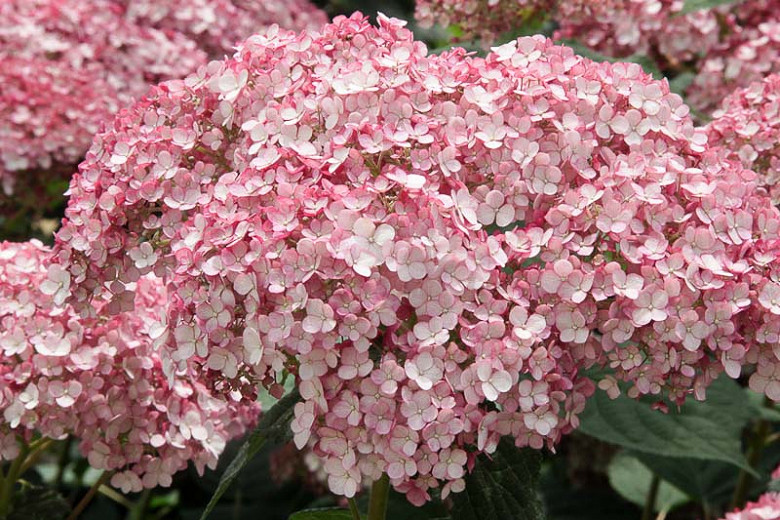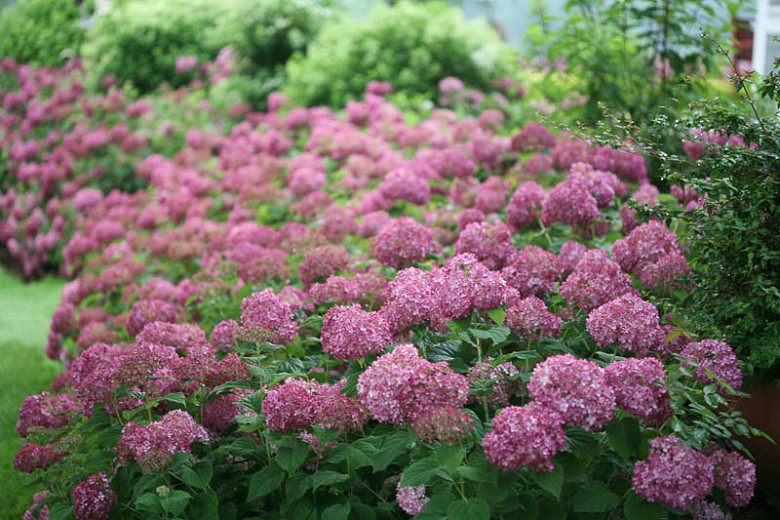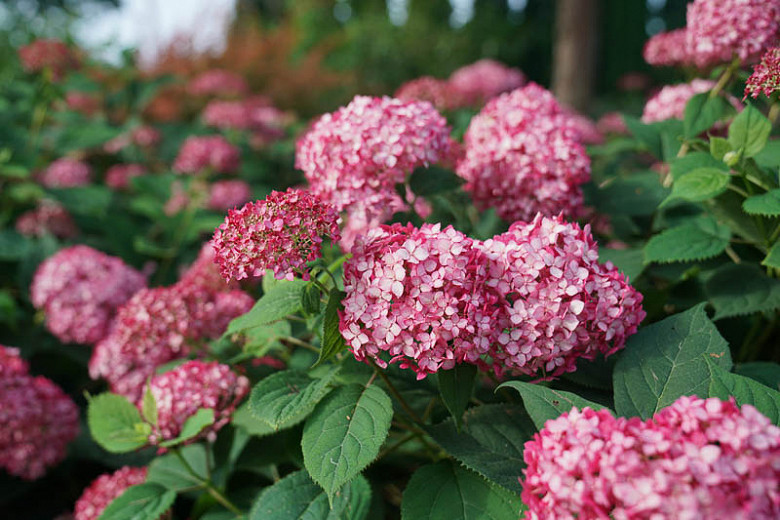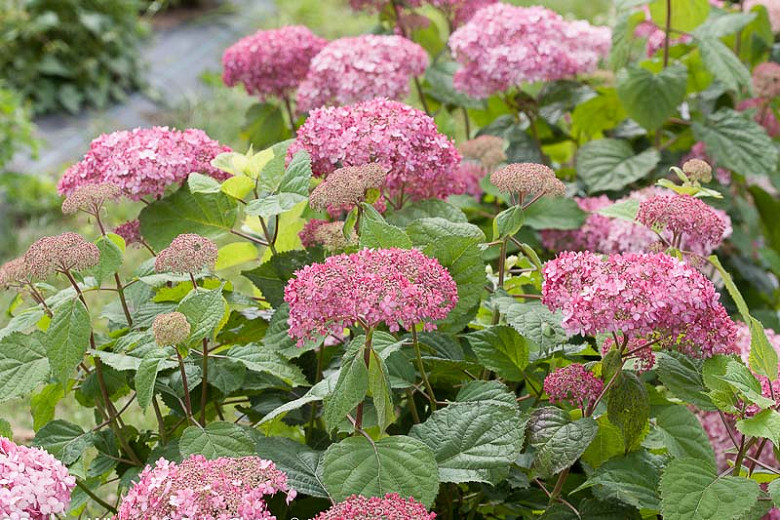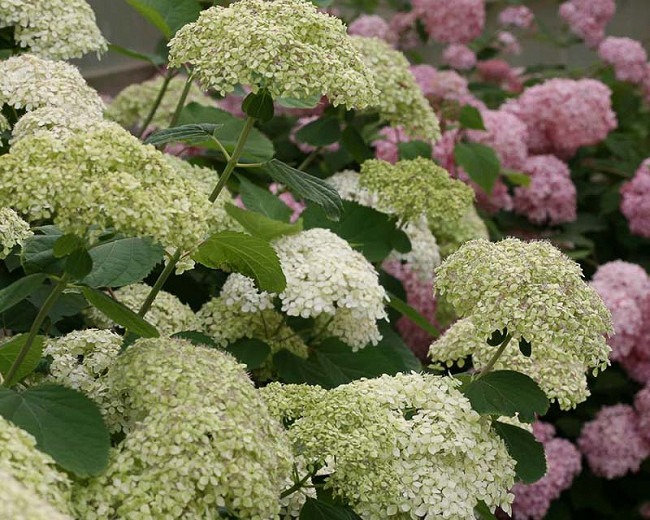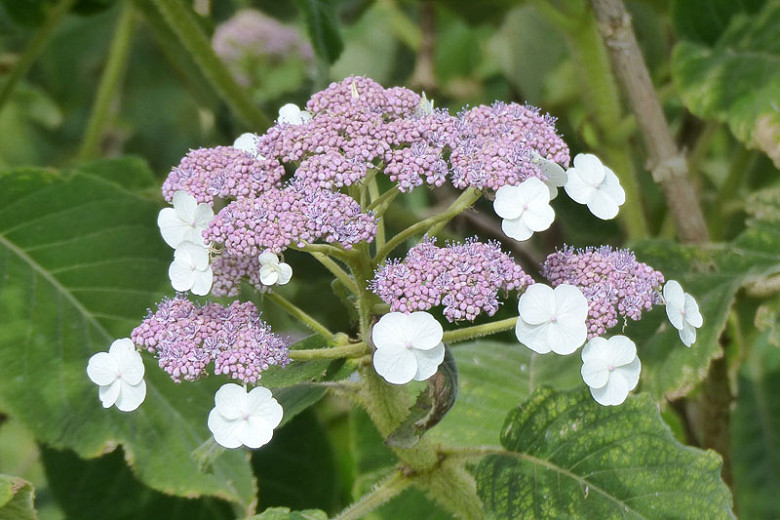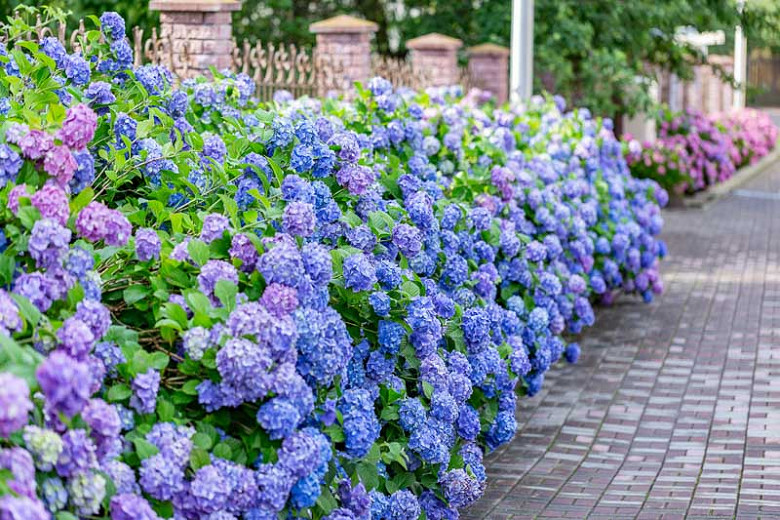Hydrangea arborescens Incrediball® (Smooth Hydrangea)
Noted for its upright stems that do not flop, Hydrangea arborescens Incrediball® (Smooth Hydrangea) is both a reliable and gorgeous flowering shrub. In early summer, this compact, deciduous shrub produces huge, rounded flower clusters, up to 12 in. across (30 cm), that brighten shady areas and bring life to the garden. Blooming for up to two months, the blossoms open lime-green, mature to brilliant white, then back to pale green in late summer before switching to a tan shade in fall. They contrast nicely with the foliage of large, ovate, dark green leaves. Incrediball is an improved version of the popular Annabelle hydrangea, with strong, sturdy stems that do not flop over and extra-large blooms. Incredibly hardy, even in the harshest winters, this US native hydrangea is perfect for mixed borders, small gardens and patio containers. The flowers make great cut flowers, fresh or dried.
- Grows up to 4-5 feet tall and wide (120-150 cm).
- Performs best in full sun or dappled shade (the hotter the climate, the more shade is needed). Best grown in average, evenly moist, but well-drained soils. Full sun is tolerated if constant moisture is provided.
- Perfect for shrub or mixed borders, wonderful planted as a flowering hedge, excellent backdrop for your favorite perennials.
- Keep an eye out for aphids, capsid bug, hydrangea scale, leaf spot.
- Requires little to no pruning. Since Smooth Hydrangea blooms on new wood, pruning has to happen late winter or early spring to encourage vigorous growth. The harder you prune (even to the ground), the larger the flowerheads will be.
- May cause mild stomach upset if ingested, contact with foliage may aggravate skin allergies. Wear gloves and other protective equipment when handling.
- Toxic to dogs, toxic to cats, toxic to horses.
- Propagate by softwood cuttings.
- Hydrangea arborescens species is native to the eastern United States.
Requirements
| Hardiness | 3 – 8 |
|---|---|
| Heat Zones | 1 – 9 |
| Climate Zones | 1, 1A, 1B, 2, 2A, 2B, 3, 3A, 3B, 4, 5, 6, 7, 8, 9, 10, 11, 12, 13, 14, 15, 16, 17, 18, 19, 20, 21, A3 |
| Plant Type | Shrubs |
| Plant Family | Hydrangea |
| Exposure | Full Sun, Partial Sun |
| Season of Interest | Summer (Early,Mid,Late)Fall |
| Height | 4' – 5' (120cm – 150cm) |
| Spread | 4' – 5' (120cm – 150cm) |
| Spacing | 48″ – 60″ (120cm – 150cm) |
| Water Needs | Average |
| Maintenance | Low |
| Soil Type | Clay, Loam, Sand |
| Soil pH | Acid, Neutral |
| Soil Drainage | Moist but Well-Drained, Well-Drained |
| Characteristics | Dried Arrangements, Cut Flowers, Showy |
| Garden Uses | Beds and Borders, Hedges and Screens, Patio and Containers |
| Garden Styles | City and Courtyard, Informal and Cottage, Traditional Garden |





